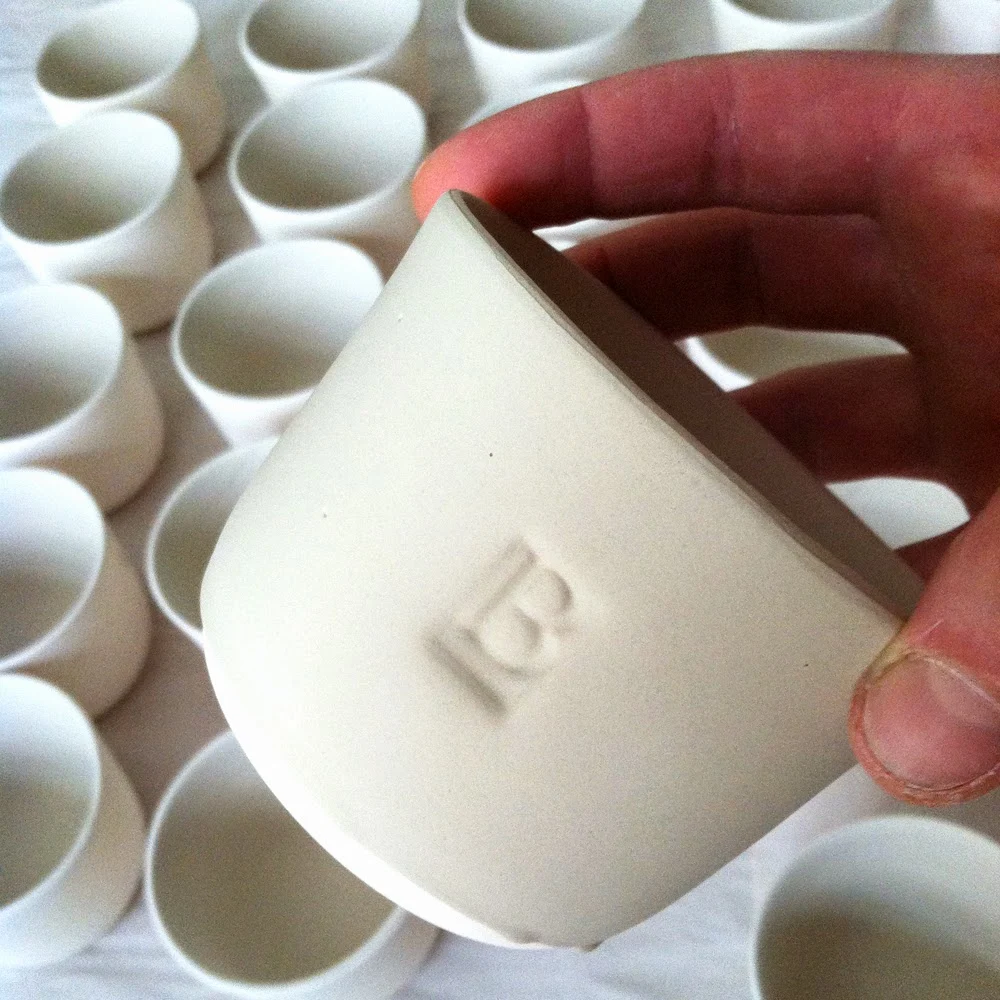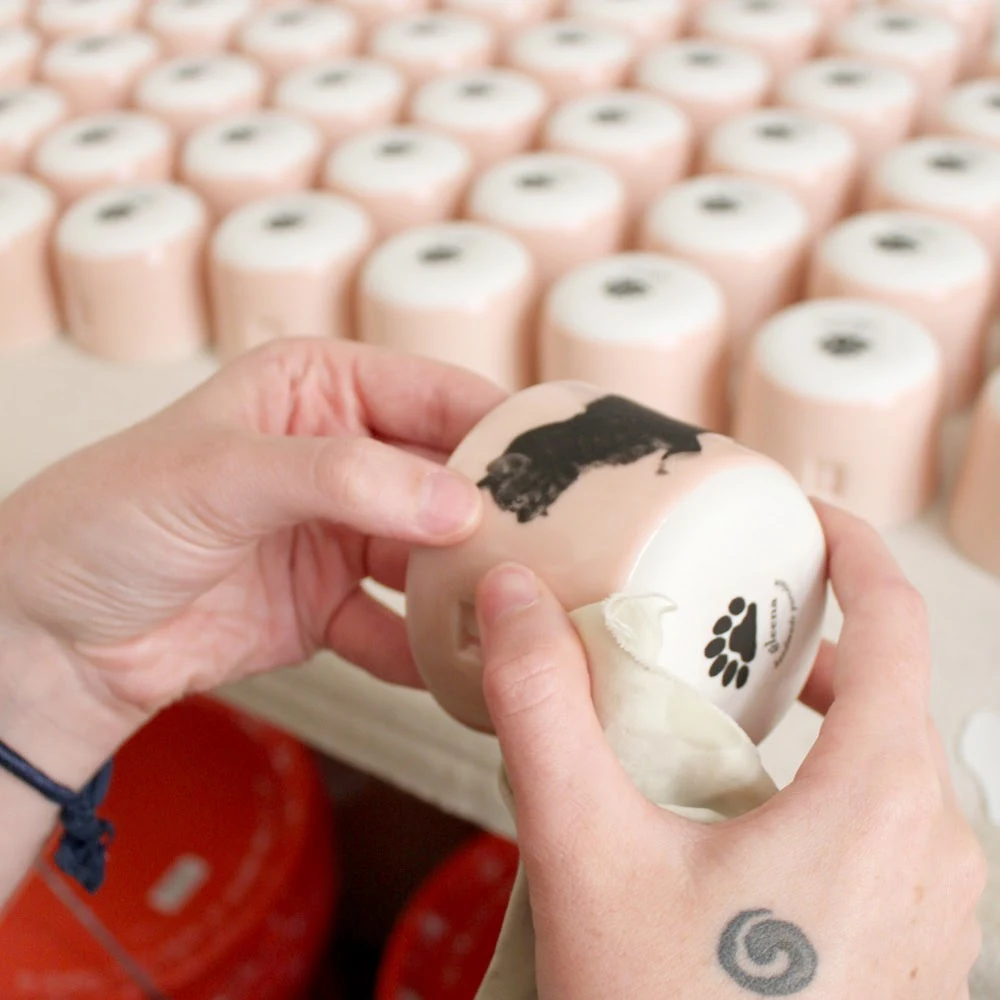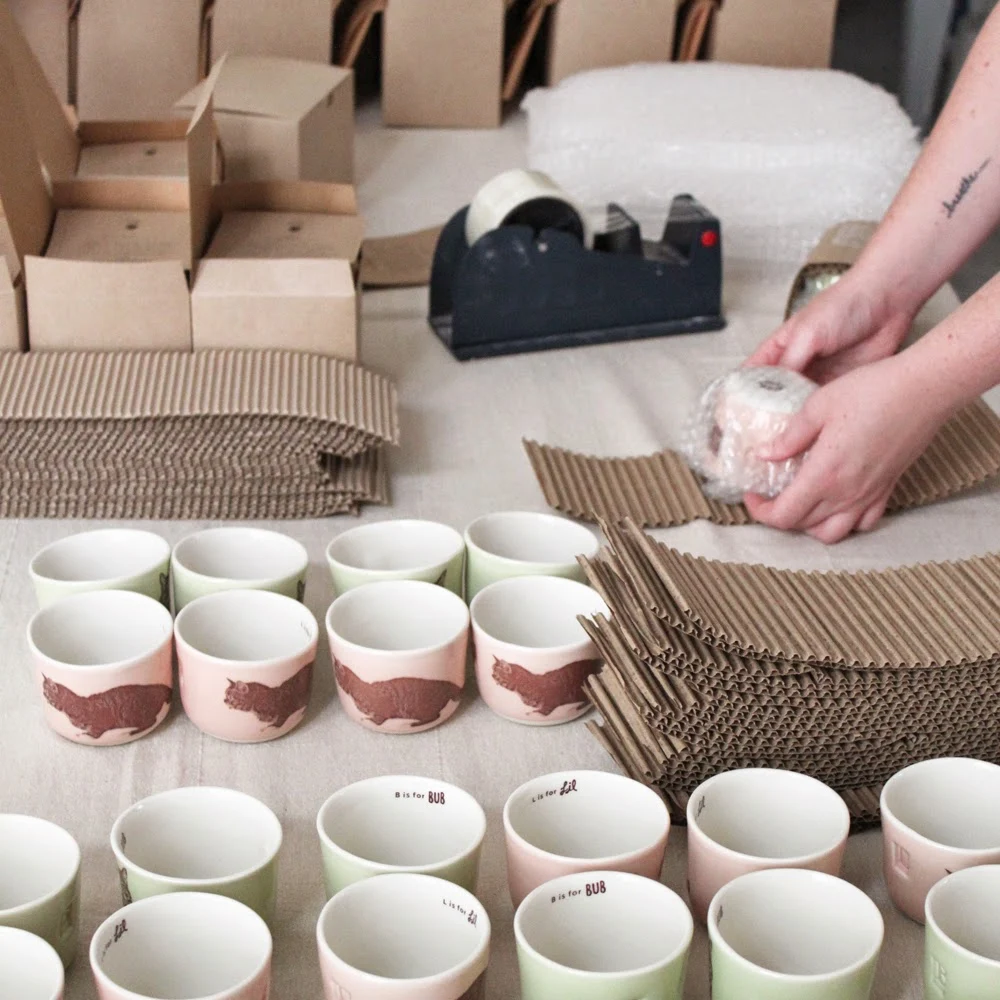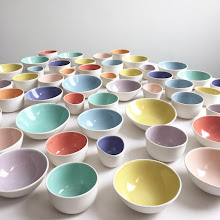This is a story of how the Lil BUB wee teas were made. It was Lil Bub’s third birthday on June 21st, and as a gift, a limited edition of wee teas were created with all proceeds going to charity. We raised over $6000 for Lil BUB’s Big Fund for the ASPCA, it sure felt good to contribute to the aid of animals with special needs. Here is the making process:
after the cups are hand-poured and popped out of a mold, each is stamped with a vintage letterpress Caslon 540 letter.
the edge is smoothed out with a sponge, so it is nice and round and feels good when you are drinking from it. any excess porcelain bits are reclaimed and used in the next batch. we mix our own porcelain slip (liquid clay) in the studio.
after the cups are completely dry, they are fired to 1948 degrees F, this firing is called a bisque.
as an aside, you might ask "why do we bisque?" porcelain is notorious for cracking, and a bisque makes it stronger, therefore easier to handle while glazing. there are clays that don't necessarily need this step. heath ceramics, for example, has developed a strong clay body that can be glazed without the bisque.
the bisque cup is then coated with wax on the bottom, to prevent the glaze from seeping in. the bottoms cannot have glaze on them, or they will stick to the kiln shelf once they are glaze-fired.
the wax has to dry out for a few hours before glazing can proceed.
while the wax is drying, the next batch of wees is already on deck to be bisqued.
glazing step one: the ivory glaze is poured into the bisque cup.
the glaze is swirled around, and then poured out. any spills over the edge are wiped off with a sponge, the excess glaze is reclaimed. we mix our own glazes, too.
glazing step two: once the inside is dry, the cups are dipped into the color glaze. you can see where the glaze rolled off the waxed part. the cups are left to dry overnight, and in the morning loaded into the glaze firing. the cups are fired to over 2300F, called a high-fire, which works well with porcelain.
after the glaze firing, the image and typography are applied. the image is printed in-studio onto a piece of film, and then transferred to the cup. each piece of image has to be smoothed out to eliminate air bubbles.
the transfers are left to dry overnight to ensure proper adhesion to the cup.
the image firing is taken up to 2100F. since the bottoms are placed directly on the kiln shelf, sometimes parts of the transfer stick to the shelf. i am ok with that, it gives the logo a unique vintage look.
transferware is a very old form of decorated ceramic, see more images of it here. we just take the modern approach and use a laser printer instead of a copper plate to print the image.
the bottom of each cup is sanded with fine sandpaper for an amazing feel, and individually wrapped for safe transit.
double corrugated packing is used to make sure the cups arrive safely. we don’t like to use styrofoam peanuts, and so far the flexible, recycled corrugated has worked great for cushioning.
designing the packaging was an extra treat, graphic design was my first career, and package design is my favorite.
it took three trips to transport the packed and labeled boxes to the post office. all were shipped via Priority Mail, and so far have safely arrived. whew! good job post office!
and good job BUB fans, i am so grateful for all your kind notes.
and thank you BUB and DUDE (who happens to be my brother). so fun to have family one can do meaningful projects with. it has been an incredible experience all around.
Subscribe to:
Comments (Atom)



















